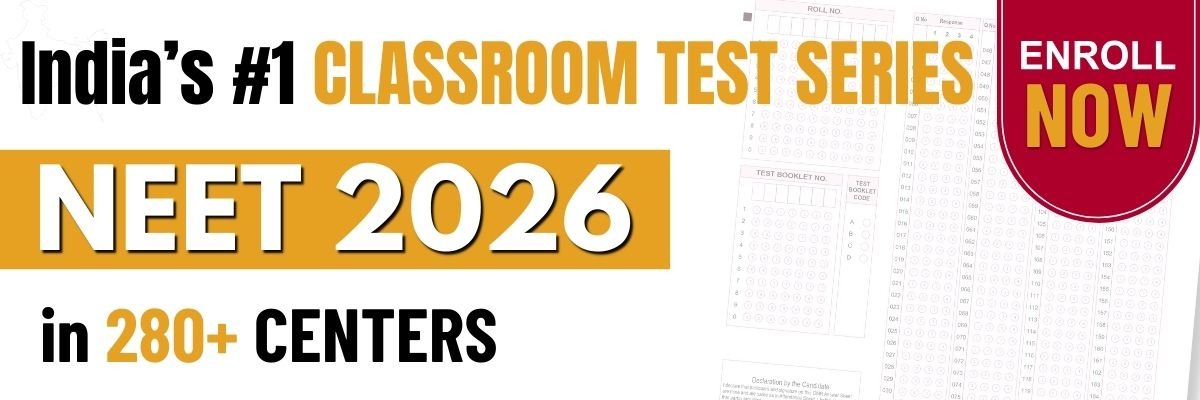(atomic weight of aluminum=27)
1. \(410\)
2. \(25\)
3. \(1850\)
4. \(925\)
1. \(1\)
2. \(3\)
3. \(2\)
4. \(\dfrac{3}{2}\)
An HCl molecule has rotational, translational and vibrational motions. If the rms velocity of HCl molecules in its gaseous phase is \(\vec{v}\), \(m\) is its mass and \(k_B\) is Boltzmann constant, then its temperature will be:
1. \( \frac{m v^{2}}{7 k_B} \)
2. \(\frac{m v^2}{6 k_B} \)
3. \(\frac{m {v}^2}{5 k_B} \)
4. \(\frac{m v^2}{3 k_B} \)
A gas mixture consists of \(3\) moles of oxygen and \(5\) moles of argon at temperature \(T.\) Assuming the gases to be ideal and the oxygen bond to be rigid, the total internal energy (in units of \(RT\)) of the mixture is:
1. \(11\)
2. \(15\)
3. \(20\)
4. \(13\)
Consider a gas of triatomic molecules. The molecules are assumed to be triangular, composed of massless rigid rods with atoms at the vertices. The internal energy of a mole of the gas at temperature \(T\) is:
| 1. | \( 3 R T \) | 2. | \(\dfrac{5}{2} R T \) |
| 3. | \( \dfrac{9}{2} R T \) | 4. | \( \dfrac{3}{2} R T \) |
To raise the temperature of a certain mass of gas by \(50^\circ\text{C}\) at a constant pressure, \(160\) calories of heat is required. When the same mass of gas is cooled by \(100^\circ\text{C}\) at constant volume, \(240\) calories of heat is released. How many degrees of freedom does each molecule of this gas have (assume the gas to be ideal)?
1. \(2\)
2. \(5\)
3. \(6\)
4. \(3\)
Match the \(C_p/C_V\) ratio for ideal gases with different type of molecules :
| Column I | Column II | ||
| (A) | Monatomic | (I) | \(7/5\) |
| (B) | Diatomic rigid molecules | (II) | \(9/7\) |
| (C) | Diatomic non-rigid molecules | (III) | \(4/3\) |
| (D) | Triatomic rigid molecules | (IV) | \(5/3\) |
| 1. | (A)-(III), (B)-(IV), (C)-(II), (D)-(I) |
| 2. | (A)-(II), (B)-(III), (C)-( I), (D)-(IV) |
| 3. | (A)-(IV), (B)-(II), (C)-(I), (D)-(III) |
| 4. | (A)-(IV), (B)-(I), (C)-(II), (D)-(III) |
Molecules of an ideal gas are known to have three translational degrees of freedom and two rotational degrees of freedom. The gas is maintained at a temperature of \(T.\) The total internal energy, \(U\) of a mole of this gas, and the value of \(\gamma~\left(=\dfrac{C_P}{C_V}\right )\) are, respectively:
1. \( U=5 R T \text { and } \gamma=\dfrac{7}{5} \)
2. \( U=\dfrac{5}{2} R T \text { and } \gamma=\dfrac{6}{5} \)
3. \(U=5 R T \text { and } \gamma=\dfrac{6}{5} \)
4. \( U=\dfrac{5}{2} R T \text { and } \gamma=\dfrac{7}{5}\)
The internal energy (\(U\)), pressure (\(P\)), and volume (\(V\)) of an ideal gas are related as \(U=3PV+4\). The gas is:
| 1. | Diatomic only |
| 2. | Polyatomic only |
| 3. | Either monoatomic or diatomic |
| 4. | Monoatomic only |
| 1. | \(\left(1+\dfrac{f}{3}\right) \) | 2. | \(\left(1+\dfrac{2}{f}\right)\) |
| 3. | \(\left(1+\dfrac{f}{2}\right) \) | 4. | \(\left(1+\dfrac{1}{f}\right)\) |







